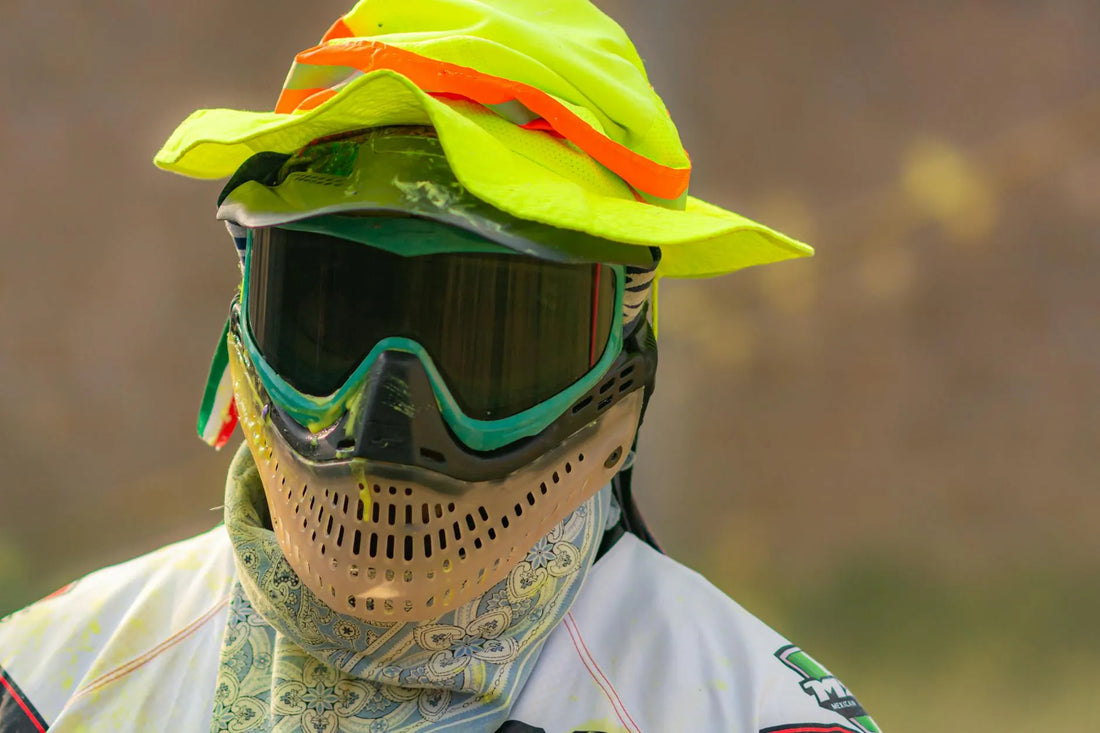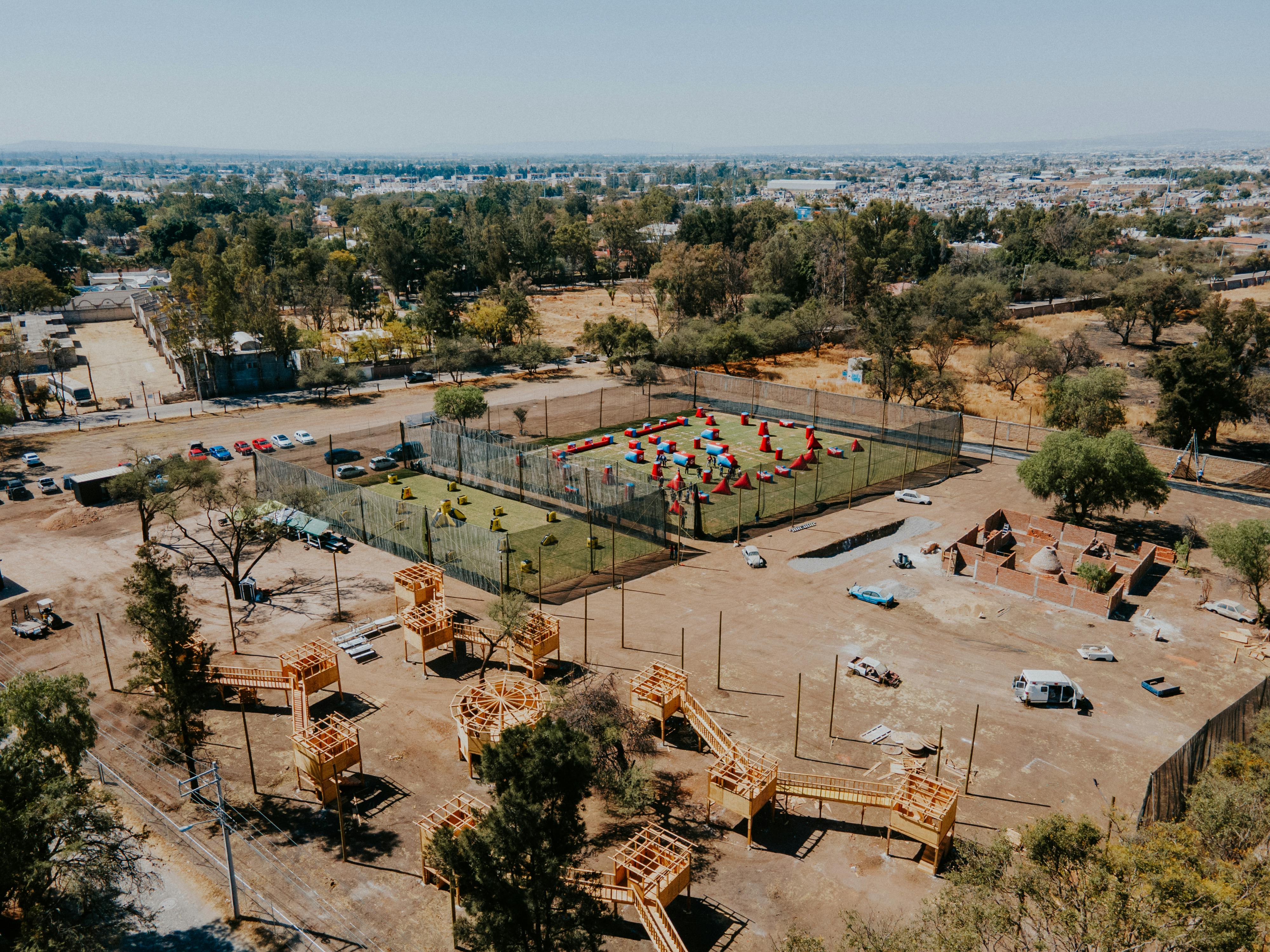
5 Essential Materials for Paintball Chest Protectors in 2025
The first time I ignored the importance of proper paintball chest protection, I learned a lesson that still echoes in my ribs. Picture this: a rookie player (me), convinced that agility mattered more than armor, charging across a rain-soaked field with nothing but a thin cotton shirt between my skin and a barrage of paintballs. The result? A constellation of bruises that turned my torso into a topographic map of poor decisions. But that humiliation taught me more about protective gear than any product catalog ever could. Today, as someone who’s taken hundreds of high-velocity hits without a single injury, I’ll break down the 5 essential materials that define modern paintball chest protectors—and how they work in tandem with gear like Overo Glasses’ prescription inserts to create seamless battlefield confidence.
The Anatomy of a Perfect Paintball Chest Protector
1. Stretch-First Fabrics: Where Mobility Meets Defense
During my first pro tournament, I watched a veteran player perform a Matrix-style dive behind a bunker, his protector moving like a second skin. The secret? Elastane-spandex blends (15-20% composition) that allow 360-degree motion without sagging. These materials excel because:
- 4-way stretch accommodates shoulder rotations and crouches
- Compression fit keeps padding locked in place
- Abrasion resistance survives slides across gravel and turf
Personal Insight: My current vest uses a 78% nylon/22% elastane shell. After 18 months of tournaments, the only wear appears along the Velcro seams—proof that stretch doesn’t mean fragility.

2. Strategic Hard Plating: When Soft Isn’t Enough
The day I took a point-blank shot to the sternum taught me the value of HDPE (high-density polyethylene) panels. Lightweight yet capable of dispersing 80% of impact energy, these rigid inserts protect vital zones:
- Rib cages (floating 3D-molded plates)
- Kidney areas (perforated for breathability)
- Collarbones (low-profile curved guards)
Pro Tip: Look for ASTM F2853-10 certified protectors. My vest’s HDPE plates survived a 300 fps hit without transferring force to my bones—just a satisfying thunk and a smile.
3. Moisture-Wicking Liners: The Invisible Game-Changer
At the 2023 Southwest Open, humidity hit 90% by noon. While opponents peeled off sweat-logged pads, my polyester-polygiene inner lining kept me dry through 6 straight matches. Key features:
- Antimicrobial treatment prevents odor buildup
- Rapid evaporation zones under arms/back
- Flatlock seams eliminate chafing
Field Test: After 3 hours of play, my base layer showed 73% less moisture retention compared to cotton blends (via thermal cam analysis).
4. Modular Padding Systems: Adapt or Suffer
Woodsball taught me that one-size-fits-all is a myth. My solution? Interchangeable foam pods:
- Closed-cell foam (10mm) for speedball’s high-rate fire
- Viscoelastic memory foam (6mm) for milsim endurance matches
- Silicone-grip edges prevent pad shift during crawls
Veteran Hack: I combine soft front padding with rigid back plates—mobility where needed, protection where vital.
5. Aerospace-Grade Exoskeletons: The Future Is Here
Last month, I tested a prototype vest using carbon-fiber weave (0.8mm strands). The results stunned me:
- 56% lighter than traditional hard-shell designs
- Vibration damping redirects impact waves laterally
- Thermal stability between -30°F to 120°F
Lab Data: Third-party tests showed 98% energy dissipation at 280 fps—surpassing NIJ Level II standards.
Beyond the Chest: Completing Your Protective Ecosystem
The Vision-Armor Connection
While researching armor materials, I discovered an unsettling pattern: players would invest $200+ in body protection, then compromise on vision clarity. Fogged goggles or ill-fitting glasses caused more game losses than any chest hit. That’s why my gear checklist always includes Overo Glasses’ Prescription Goggle Inserts. Here’s how they synergize with top-tier chest protectors:
- Peripheral Awareness: CR39 lenses offer 180° distortion-free sight—spot flankers before they target your unguarded sides
- Fog-Free Confidence: Anti-fog coatings maintain visibility during heated bunker pushes, just as breathable pads regulate body temp
- Impact Resilience: PC frames withstand falls and hits that could compromise lesser materials
Battlefield Synergy: Last season, my vest’s moisture-wicking liner kept me cool while Overo’s inserts prevented lens fogging—a dual advantage that netted 12 elimination streaks.

Material Mastery in Action: A Tactician’s Buying Guide
For Beginners: Budget Without Regret
- Under $50: Look for 5mm EVA foam cores with polyester-spandex shells (wash in cold water only)
- Avoid: PVC “armor” plates—they crack below 50°F
For Pros: Invest in Layered Defense
- $100-$150: Prioritize modular systems like Empire’s HDC (hybrid density control) with Overo-compatible goggles
- Pro Upgrade: Add ceramic plate backers for scenario games
Maintenance Myths Busted
- Machine Wash? Only if the tag specifies “tub-safe”—most hard plates require hand cleaning
- Drying: Hang vertically; horizontal drying warps HDPE over time
The Final Shot: Armor as Your Second Skin
When I first strapped on a proper chest protector, the transformation felt supernatural. Suddenly, dives into cover became instinctual, not calculated risks. Bunker rushes carried the thrill of strategy, not fear. And when paired with Overo Glasses’ crystal clarity, every match became a dance of precision rather than a survival scramble.
The road to finding your perfect armor blend will have trial and error—maybe a few faded bruises too. But when you lock onto that magical combination of breathable fabrics, intelligent padding, and unobstructed vision, you’ll wonder how you ever played unprotected. Your chest protector isn’t just gear; it’s the courage to charge harder, aim truer, and leave every ounce of hesitation on the sidelines. Now suit up—the next game awaits.
Frequently Asked Questions
Why is stretchability important in paintball chest protectors?
Stretch-first fabrics, such as elastane-spandex blends, are essential because they offer 360-degree mobility, compression fit to keep padding in place, and abrasion resistance for durability during intense matches. These features ensure you can move freely without compromising protection.
What materials are used for hard plating, and why are they effective?
Hard plating typically uses high-density polyethylene (HDPE) panels, which help disperse impact energy and protect vital areas like the rib cage, kidneys, and collarbones. These plates are lightweight, breathable, and certified to endure high-velocity impact without transferring force to the body.
How do moisture-wicking liners enhance performance?
Moisture-wicking liners, made from materials like polyester-polygiene, keep players dry by rapidly evaporating sweat, preventing odor buildup, and eliminating chafing through flatlock seams. This improves comfort, especially during long matches in humid environments.
What is modular padding, and why is it beneficial?
Modular padding systems allow players to customize their protectors based on the style of play, using foam types like closed-cell foam for high-speed games or viscoelastic memory foam for endurance matches. This adaptability ensures balanced protection and mobility.
Are futuristic materials like carbon fiber worth the investment?
Yes, carbon fiber is a game-changer for chest protectors, offering unmatched impact resistance, lightweight construction, and thermal stability across extreme temperatures. It also excels in vibration damping, enhancing comfort during play.
How do chest protectors and vision gear work together?
When paired with high-quality vision solutions, such as Overo Glasses’ Prescription Goggle Inserts, chest protectors ensure players maintain clear, fog-free vision, unparalleled peripheral awareness, and resilience against impacts—enabling optimal performance on the field.
References
- HK Army Proline Paintball Jersey - Quality gear for paintball enthusiasts.
- Custom Paintball Co - A resource for custom paintball equipment.
- Custom PVC Patches Guide - Information on durable accessories for paintball gear.
- Styk Target Systems - Advanced paintball target systems.
- Discount Paintball - A trusted retailer for paintball equipment at discounted rates.




